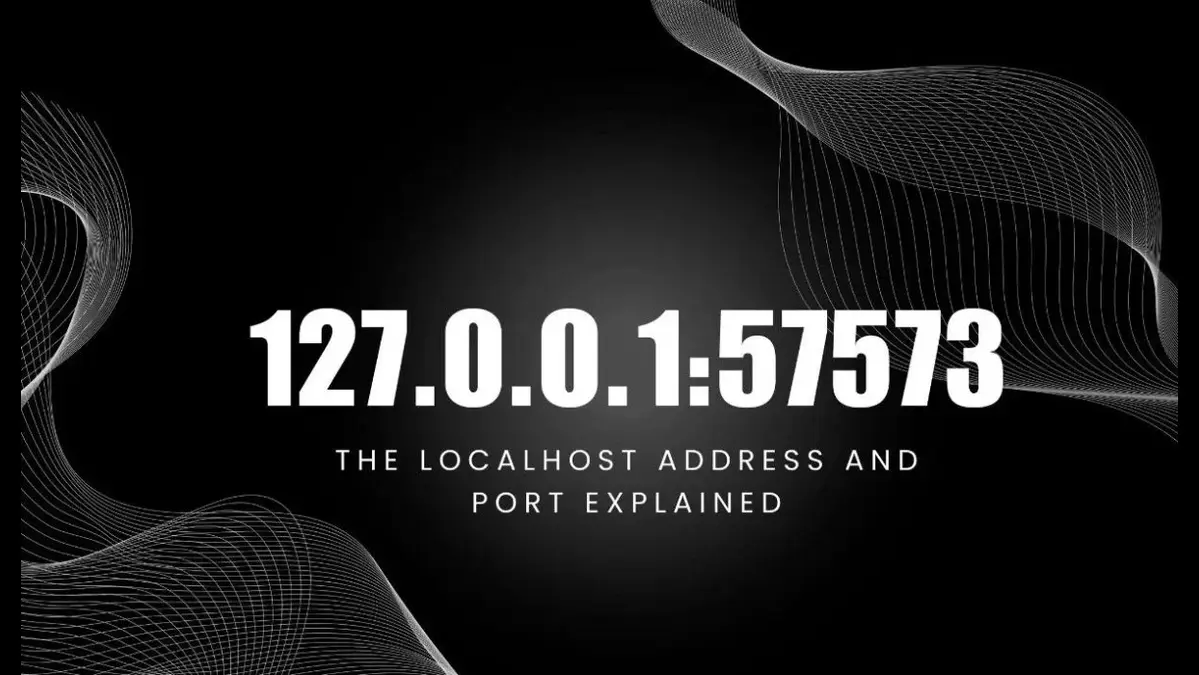Have you ever wondered where your computer directs its internal whispers? Enter the fascinating world of localhost, specifically focusing on 127.0.0.1:57573—a unique address that serves as a gateway for developers and tech enthusiasts alike. This seemingly innocuous string of numbers is more than just a technical detail; it’s a vital tool for testing, development, and debugging applications without needing an external server.
Whether you’re building web applications or learning about networking, understanding localhost connections can significantly enhance your productivity and creativity in coding projects. Buckle up as we dive deep into what makes 127.0.0.1:57573 tick and how it fits into the broader landscape of local development!
What is Localhost?
Localhost is a term that describes your computer’s internal network interface. It’s essentially a 127.0.0.1:57573 loopback address, allowing your machine to communicate with itself.
The most common representation of localhost is the IP address 127.0.0.1, which acts as a placeholder for your own device in networking terms. This address ensures that any data sent from this point returns to the same device.
When you type “localhost” into your browser, you’re reaching out to services running on your own system rather than an external server. This setup makes it ideal for testing applications and websites without going live.
In essence, localhost creates a safe sandbox environment where developers can experiment freely without impacting real-world users or resources outside their machine.
How Does Localhost Work?
Localhost operates as a virtual server that helps developers test applications locally. It uses the IP address 127.0.0.1 to create a loopback connection to your own machine.
When you access localhost, your device communicates with itself instead of reaching out over the internet. This setup allows for rapid testing without any external interference.
Essentially, it creates an environment where developers can run web servers or databases on their machines seamlessly. You might use tools like XAMPP or MAMP to manage these local servers easily.
Each port number represents a specific service running on localhost, such as 57573 in our case. By directing traffic through this port, developers can debug and refine their applications efficiently before deploying them online.
This process not only speeds up development but also enhances security by keeping sensitive data off public networks during initial testing phases.
The History of 127.0.0.1:57573
The IP address 127.0.0.1 has a rich legacy in computing, often referred to as the loopback address. 127.0.0.1:57573 It allows devices to communicate with themselves, effectively creating a virtual network interface.
As for the port number 57573, it emerged during the growth of web development and testing environments. Developers began using non-standard ports like this one to run local servers without clashing with commonly used ports.
This combination became popular among programmers aiming for efficient testing setups. The use of localhost addresses ensures that applications can read and write data locally before deployment.
Over time, tools like Docker and various IDEs have incorporated these connections into their workflows, making them even more essential for modern software development processes. Today, 127.0.0.1:57573 remains an important reference point in local networking discussions.
Common Uses for Localhost Connections
Localhost connections play a crucial role in web development. Developers often use them to test applications before they go live. This ensures that the software runs smoothly without affecting end users.
Another common use is for database management. Local servers allow developers to interact with databases securely and efficiently, making it easy to refine queries or troubleshoot issues.
Web designers also benefit from localhost setups. By using 127.0.0.1:57573, they can view design changes instantly without deploying files online.
Additionally, education has embraced localhost connections as a teaching tool. Students learn coding and software development skills safely on their machines, mimicking real-world environments while avoiding potential risks associated with public servers.
In essence, localhost serves as a sandbox—a safe space for innovation and experimentation in various tech fields.
Troubleshooting and Security Concerns
When working with localhost connections like 127.0.0.1:57573, users may occasionally encounter issues. These can range from connectivity problems to application errors.
Troubleshooting begins with a simple check of your network settings. Ensure that the server is running properly and listening on the correct port. A quick restart of both the application and computer can also resolve many common glitches.
Security is another crucial aspect to consider. Even though localhost connections are typically safe, 127.0.0.1:57573 vulnerabilities still exist. Always ensure your software is up-to-date to protect against potential exploits.
Using firewalls can add an extra layer of security, but they may sometimes block access to certain ports or applications unintentionally. Regularly review firewall rules for any misconfigurations that could hinder operations.
Monitoring logs from your local server will help identify suspicious activity or repeated connection failures too.
Alternative Options for Local Development
For developers seeking alternatives to 127.0.0.1:57573, several options are available that can enhance the local development experience.
One popular choice is using virtual machines through platforms like VirtualBox or Vagrant. These allow for a complete OS environment, making it easier to simulate different setups without affecting your main system.
Docker has also gained traction in recent years. It enables containerized applications to run consistently across various environments, reducing compatibility issues significantly.
Cloud-based development environments offer another innovative option. Services such as GitHub Codespaces or Repl.it let you code from anywhere with just a browser while managing resources efficiently.
Consider utilizing WAMP or LAMP stacks if you’re working on PHP-based projects. These pre-configured packages streamline setup and provide robust support for testing web applications locally without hassle.
Conclusion
Understanding localhost connections, particularly the IP address 127.0.0.1:57573, opens up a world of possibilities for developers and tech enthusiasts alike. Localhost serves as a fundamental tool in software development, allowing users to run applications locally before deploying them to remote servers.
As we’ve explored, localhost functions by creating a loopback network interface that enables communication with your own computer without external interference. This is not just a convenience; it has historical significance too. The evolution from basic local connections to more complex port numbers like 57573 reflects the ongoing advancements in technology.
The use cases for localhost are broad-ranging—from web development environments to application testing—making it an indispensable asset for anyone working in coding or IT infrastructure. However, it’s essential also to consider potential troubleshooting issues and security measures while using this connection type.
For those seeking alternatives for local development, numerous tools provide similar functionalities but may offer unique features tailored to specific needs or workflows.
Exploring these aspects of localhost can deepen your understanding and enhance your ability to work effectively within various digital frameworks related to 127.0.0.1:57573.




